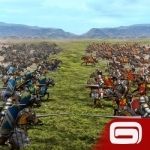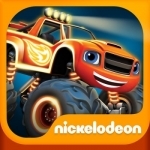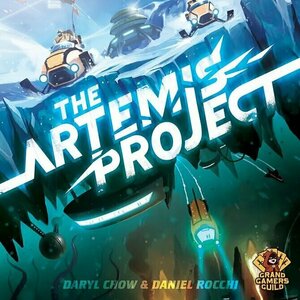
March of Empires
Games and Social Networking
App
Brace yourself for an age of massive medieval war, where you will march over your rivals’ burning...
Emma @ The Movies (1786 KP) rated Fantasy Island (2020) in Movies
May 5, 2020
A group of strangers arrive on an island, this experience will give them their deepest desires. Wish for it and you can live it, all you have to do is see it through to the end on Fantasy Island.
Evidently, Nic Cage turned down the role of Mr Roarke... I didn't know that he turned down any roles so that (if true) should have been a massive warning sign.
I do have to wonder how some of these stories come about. This is based on the 70's TV show of the same name which was entirely not scary as far as I know. Is there a giant bingo cage full of ping pong balls inscribed with names of old shows and films? Do they just let studios try their luck to spin whatever they get to their niche?
Twisting this tale is a pretty good idea, though I'm not really sure why an island would want to do that to people, but what do I know about malevolent black goop spirits? I was generally on board with the storyline and I thought it wove them together quite well but that ending... are you kidding me? There was some speculation thrown out about what was going on and that thread was believable. The one they gave us was laughable, the absolute worst choice. Had they done a small reshuffle they could have given a much less ridiculous conclusion.
There are a lot of different threads and each one has its moments, as daft as they might be they come together quite well even when the filler is poor.
Maggie Q's performance as Gwen felt like the most believable out of the whole ensemble, but that's not really a surprise from her. Gwen is basically the only decent person in the group and throughout her stay she is the one that's grounded and tries to deal with her situation. That should give us something good to work off... but she's kind of bland on screen compared to everything else.
Michael Peña is always a pull to a movie for me, but Roarke's story wasn't all the effective. Had he been a construct of the island then there might have been something in it, but as it was you didn't get any real struggle with his actions, I couldn't see how a character that wasn't portrayed as actively evil could go along with any of it even given his background.
While the rest of the cast is filled with faces you'd know there isn't really a great performance to be seen. From unlikeable characters to a script that's not amusing when it tries to be, what's left of the film is plain in a glossy kind of way, and by that I mean it's got the makings of something good but misses anything that could have made an impact. The effects are fine for the most part and the sets are fine when you take into consideration they're supposed to be a fantasy and don't need to fit together perfectly. The exception is Roarke's door that Maggie Q interacts with, I liked that move and I don't know whether the rest of the film might have benefitted from something similar.
Bits of the film are quite good and could have made for an exciting watch, but that ending was so frustrating that any enjoyment went straight out the window and any thrill from what I'd already seen was gone. Also, considering it is classified as horror there wasn't really enough, or anything of quality, too make that a reality. Untapped potential in abundance here.
Originally posted on: https://emmaatthemovies.blogspot.com/2020/05/fantasy-island-movie-review.html

Blaze and the Monster Machines - Racing Game
Education and Games
App
Get ready to race along with Nick Jr.’s Blaze and the Monster Machines in this fun truck racing...

Blaze and the Monster Machines - Racing Game HD
Education and Games
App
Get ready to race along with Nick Jr.’s Blaze and the Monster Machines in this fun truck racing...

If you’re happy & you know it - Full Version
Education and Games
App
~~~ Full Interactive Song + 9 Amazing Educational Games Inside ~~~ ~~~ Top HD graphics and superb...
Gareth von Kallenbach (980 KP) rated Real Steel (2011) in Movies
Aug 7, 2019
In the film “Real Steel”, Hugh Jackman plays Charlie Kenton, a down-on-his-luck promoter whose best days are definitely behind him. In the near-future setting of the film, robots have replaced humans in the boxing ring and Charlie is constantly and desperately looking for the next big thing to help him claim a little fame and a lot of fortune.
Following the loss of his fighting robot, Charlie is summoned to Texas after the passing of his ex-girlfriend, the mother of his son. Charlie is eager to sign over the guardianship of his son, Max, to Max’s aunt, but after noticing her wealthy husband, decides to take advantage of the situation. Charlie makes a deal to sign over the guardianship of his son Max, (Dakota Goyo) in exchange for a large sum of money which he plans to use to get back into the robot fighting game. The catch for Charlie is that he must watch Max for the summer so Max’s future parents can take a planned trip to Italy.
Max is quickly thrown into the robot-fighting world when he forces his dad to take him along to a bout. Unfortunately, it’s yet another painful loss for Charlie and their first father-son trip ends with them scouring a junkyard for robot replacement parts. It’s Max who literally stumbles across an old robot and becomes convinced that the discarded machine could become a champion given the right conditions. Despite his misgivings, Charlie agrees to train the robot and in doing so gets to reconnect with his estranged son. Charlie is given a shot at redemption when Max’s robot becomes a fighting success and starts to advance through the rankings.
Naturally with increased success comes increased expectations and risks for Charlie and Max’s robot. There are numerous people looking for them to fail, as there is no way that a washed up boxer with a kid and an outdated machine can take on the machines of the professional circuit. Predictably, but still grippingly so, the outdated robot, named Atom, makes his way from seedy fighting pits to upscale arenas. Eventually the Atom team is given a shot at the big time which, as fans of sports films know, is destined to end with a climactic bout with the larger-than-life champion.
What sets “Real Steel” apart from other CGI laden action films is the human element and emotional connections you make with the characters, and even the blue-eyed junkyard robot itself. Although Atom is a CGI construct of a machine, you find yourself pulling for this unlikely underdog just as much its flesh and blood costars. The action sequences are intense and amazing to look at but never overshadow the underlying storyline of love and redemption.
Jackman gives a believable performance as a seemingly callous individual with no redeeming qualities. (Remember, he essentially sold his son). Evangaline Lily, is solid and likeable in a supporting role as Charlie’s old friend and former love interest. Goyo, fresh off his work playing the younger Thor in this past summer’s blockbuster, does a remarkable job in what is likely his breakout role. He has the spunky innocence of youth with a maturity that I had not seen in any young actor since Haley Joel Osment in the Sixth Sense.
“Real Steel” may not be the most original film, as aside from the robots this is a boxing tale that is been told many times before. I definitely saw lots of elements of the original Rocky but still found the film extremely enjoyable and entertaining as well as one of the most pleasant surprises of the year. It is rumored that a sequel is already in production and I actually hope that this is the case. This is one story I certainly wouldn’t mind going a few extra rounds with.

Art Of Brick Laying
Productivity and Reference
App
This is a series of 236 tuitional and informative videos all on the art of brick laying and more! ...

PES CLUB MANAGER
Games and Entertainment
App
The "PES" soccer simulation game has been played by more than 25 million users around the globe....
Purple Phoenix Games (2266 KP) rated Point Salad in Tabletop Games
Nov 1, 2021
Simply put, Point Salad is a tableau-building game where players are drafting cards with specific scoring rules and sets of the six different suits to maximize the scoring of their drafted score cards. Each card in the game is double-sided, with one side showing a vegetable and the other side showing a unique scoring system. The player who earns the most points at the end of the game will be the winner and be forced to eat a salad reflecting their drafted veggies from the game. All right, that isn’t true, but they CAN gloat as much as they please.
To setup, construct the deck as outlined in the rules per the number of players. Shuffle the deck and roughly divide into three stacks, point side up. From these stacks place out two cards, veggie side up, below them. Choose the first player and the harvesting may begin!
On a turn, the active player may choose to draft one point card or two veggie cards from those visible in the market. They now place the cards in their personal tableau in front of themselves and the turn moves to the next player. The game continues in this fashion of drafting one or two cards every turn until all cards have been drafted.
Once all cards are drafted from the market, players analyze their scoring cards and determine points using the veggie cards they drafted. As each point card depicts a unique scoring set, each player may end with wildly different score totals. The player with the most points is the winner!
Components. This one is easy. It’s a deck of 108 double-sided cards and a tiny set of rules. The cards are all great quality and feature the most clear and appropriate art by Dylan Mangini. I have grown to really love his artwork on different games – I really dig his style. Components in this one are wonderful and I am considering sleeving the game because I just want to keep it pristine through the years.
It is certainly no surprise that I adore this game. Honestly, I only even gave it a shot because my friend Bethany, of Ryan and Bethany Board Game Reviews, placed it in one of her Top 10 lists and I had oftentimes simply passed it up at the FLGS. I am super glad she turned me on to this one, as it is easily one of my new favorites to bring to the table. I do have one tiny issue with the game. The box reads for ages 8+ but my 5-year-old son has zero problems understanding and playing the game. I mean, I have to read (and sometimes explain) the point cards to him, but I love seeing him think about and work through some tactics while playing.
I think that for me and my family, Point Salad fills a nice little niche in my collection. It is an excellent introduction to both drafting and tableau-building that other games can build upon for us. I very much enjoy the possibility of never playing the same game twice as 108 double-sided cards offers such variability and replayability that I hope will keep the game from becoming boring over multiple plays. Right now, though, it is humming along for us, and we are so grateful to Miss Bethany for introducing us to this little gem! Purple Phoenix Games gives this one a delicious 5 / 6. If you are looking for that low-stress, but very tactical, card game for easygoing nights, pick yourself up a copy of Point Salad.
Purple Phoenix Games (2266 KP) rated The Artemis Project in Tabletop Games
Apr 6, 2021
The Artemis Project is a game of dice/worker placement in which players are trying to build and sustain a prosperous colony on Jupiter’s moon Europa. Played over 6 rounds, players will take turns rolling and placing dice across the regions of the board to collect resources, construct buildings, recruit and train colonists, and partake in expeditions to explore this vast ice-land. To begin, follow the setup instructions in the rulebook for the appropriate player count. Each player receives a player board, dice, and markers in their chosen color. Populate the board for the first round, select a starting player, and the game is ready to begin!
Disclaimer: I do not intend to rehash the entire rulebook in this review, as there are just too many details. For a more in-depth look at The Artemis Project, pick up a copy from your FLGS or directly from the publisher! -L
To start each round, all players will simultaneously roll all 5 of their dice. Once players are happy with their results, the round is ready to properly begin. Each round is broken into three phases: Placement, Resolution, and Upkeep. To begin the Placement phase, starting with the first player, players will take turns assigning one die at a time to the 7 regions of the board. These regions are: Basecamp, Vents, Quarry, Gantry, Doorstep, Academy, and Outfitters. (I will explain each region in more detail in the next section!) The value of the dice placed in any region is important, because it will dictate what you are allowed to do, or when you are allowed to resolve the action for that region – so choose your placements wisely.
Once every player has placed all 5 of their dice, the Resolution phase begins. During the Resolution phase, each of the regions of the board will be resolved in order, allowing players to perform their region-specific actions. Resolution starts with Basecamp. Placing dice at Basecamp allows players to partake in Expeditions in an effort to earn Expedition Badges (which translate to end-game VP), as well as extra rewards. Each Expedition has a difficulty level which must be equaled or surpassed by the total of all dice placed on that card. If the difficulty is surpassed, the Expedition is a success and rewards are doled out accordingly, but if the Expedition fails, no rewards are earned by anyone.
The next 2 regions, Vents and Quarry, allow players to collect Energy and Minerals, respectively, and are resolved in the same way. Players will collect a number of resources equal to their played die value. Pretty straight-forward! Moving on to the Gantry region, the value of dice placed on any building tiles are considered bids for buying/constructing that building. You can bid against opponents for building tiles, but each bid must increase the previous amount. When resolving the Gantry, the highest value die on a tile is the winner, and that player must pay their die-amount in Minerals to collect that tile. Buildings are added to your colony, and allow you to perform special actions once they are fully-staffed (all colonist slots on the tile are filled).
Next is the Doorstep – depending on the value of dice you placed there, you will be able to recruit 1-3 new colonists. Recruiting a colonist costs you 2 Energy per new addition, and any new colonists you recruit can be placed immediately into any of your buildings (if space is available), or into your Shelter where they will wait to be used. The Academy region allows you to exchange a colonist of your choice for one of a different type/occupation, again, depending on the value of the die used. And finally, the Outfitters region does not resolved during this phase, because it’s action is performed immediately upon dice placement. Any dice placed to the Outfitters gives Tool Kits (used to manipulate die values at the start of each round) to the player, based upon the die value.
The remaining element of the Resolution phase is the Even card. At the start of each round, an Event card is drawn, and will pertain to a certain region of the board. During the Resolution phase, when that region is reached, the Event card will be resolved – either penalizing players or benefitting them in some way. I have purposefully left out a few elements of the Resolution phase for you to discover on your own!
Once all regions have been resolved, the round moves to the Upkeep phase. During this phase, all players can choose to move 1 colonist to a building tile, or swap any 2 colonists between buildings. This is not required, but can only be performed once during this phase. Next, if any players have fully-staffed buildings (all colonist slots are filled), they may activate the listed ability. And finally, for any colonists left in your shelter and not in a building, you must pay 1 Energy for each to keep them warm! The game board is now refreshed for the next round, a new starting player is selected, and the new round is ready to begin. After the 6th and final round, VPs are tallied – earned through number of building tiles, Expedition Badges, sets of resources, and sets of colonists – and the player with the most VP is the winner!
I know that seems like a lot, but I promise that once you start the first round, everything is pretty intuitive and the game flows well. The turn sequence and phases are logical and easy to understand. The game board itself has lots of helpful icons that work as reminders throughout gameplay, and the rulebook has a nice and concise round overview on the last page as well, which is easy to refer back to at a moment’s notice. I’ll go ahead and touch on components here, since I kind of already started to do so. The components in this game are great! The game board and cards are all sturdy and have colorful and immersive artwork. The dual-layered player boards are high quality, the colonist meeples are cute and effective, the building tiles and cardboard chits are strong and can definitely hold up to many plays, and the dice are easy to roll and read. Definitely an A+ on components from me.
I have to admit that The Artemis Project surprised me. At its core, it is a worker placement game, and that in and of itself lends itself to a certain gameplay. You’re trying to complete your own agenda, being the first to snag those important placements that you need to accomplish those goals, while also blocking opponents from doing the same. The thing that makes The Artemis Project unique is that the ‘workers’ in this game are dice. And their value is what dictates the resolution of each region. Just because you place a die in a region first, does not necessarily mean that you will get to resolve first – depending on how your opponents play, they could block you entirely! The use of dice adds an extra layer of strategy to the gameplay that really elevates it beyond a simple worker placement mechanic. Another great thing about this game is that there is no one way to win – there are several strategies that you could play by in an effort to earn VPs. Maybe you are trying to complete as many Expeditions as possible, or want to construct as many buildings as possible. Either strategy can work, and all strategies can easily be adapted and altered during gameplay.
I am so happy that I came across this game on Kickstarter. The game is strategic, engaging, and just fun to play. I’m not necessarily a huge fan of worker placement games, but the approach to the mechanic taken by The Artemis Project really puts a unique twist on it that adds to the gameplay. This is one KickStarter that was definitely worth the investment. Check it out if you haven’t heard of it, or if you’re looking to elevate your worker placement games. Purple Phoenix Games gives it an enterprising 10 / 12.



